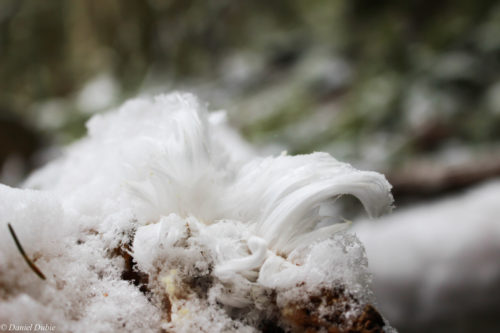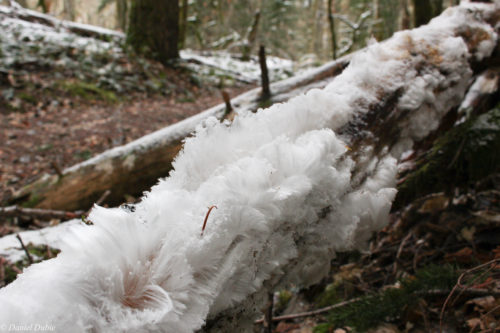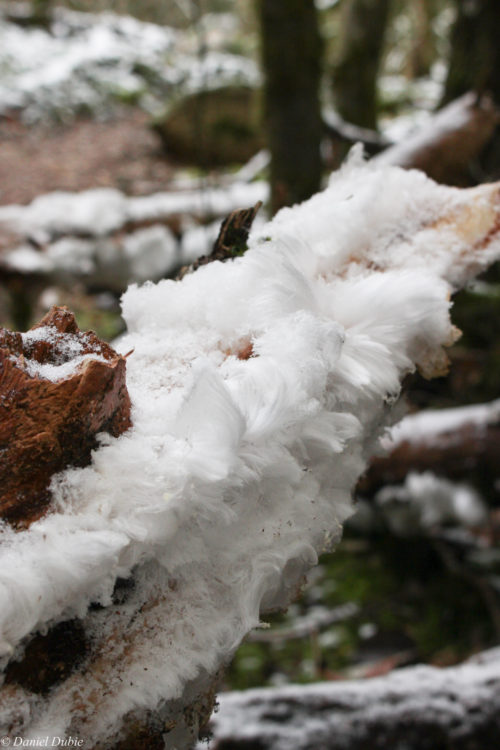Naturalist Notes: Hair Ice

A cold afternoon walk led to a beautiful winter discovery on the Deer Creek Loop trail around the Environmental Learning Center. The temperature had dropped significantly overnight and along with a fresh dusting of snow, we found fine hairlike strands of ice covering numerous down trees all along the trail. Aptly named “hair ice”, these delicate strands of ice form on moist, dead wood when temperatures drop below freezing and the air is humid.
After a little research, we found that this peculiar ice formation is caused by the presence of a fungus within the tree, exidiopsis effuse. Christian Mätzler, the physicist who discovered the conditions needed to grow hair ice, explains how this formation occurs:
“The driving mechanism responsible for producing ice filaments at the wood surface is ice segregation. Liquid water near the branch surface freezes in contact with the cold air, creating an ice front and ‘sandwiching’ a thin water film between this ice and the wood pores. Suction resulting from repelling intermolecular forces acting at this ‘wood–water–ice sandwich’ then gets the water inside the wood pores to move towards the ice front, where it freezes and adds to the existing ice.”
The fungus acts as a “recrystallisation inhibitor”, allowing the ice to form into the hairlike structures.





All photos courtesy of Daniel Dubie, Cohort 16 Graduate Student.

